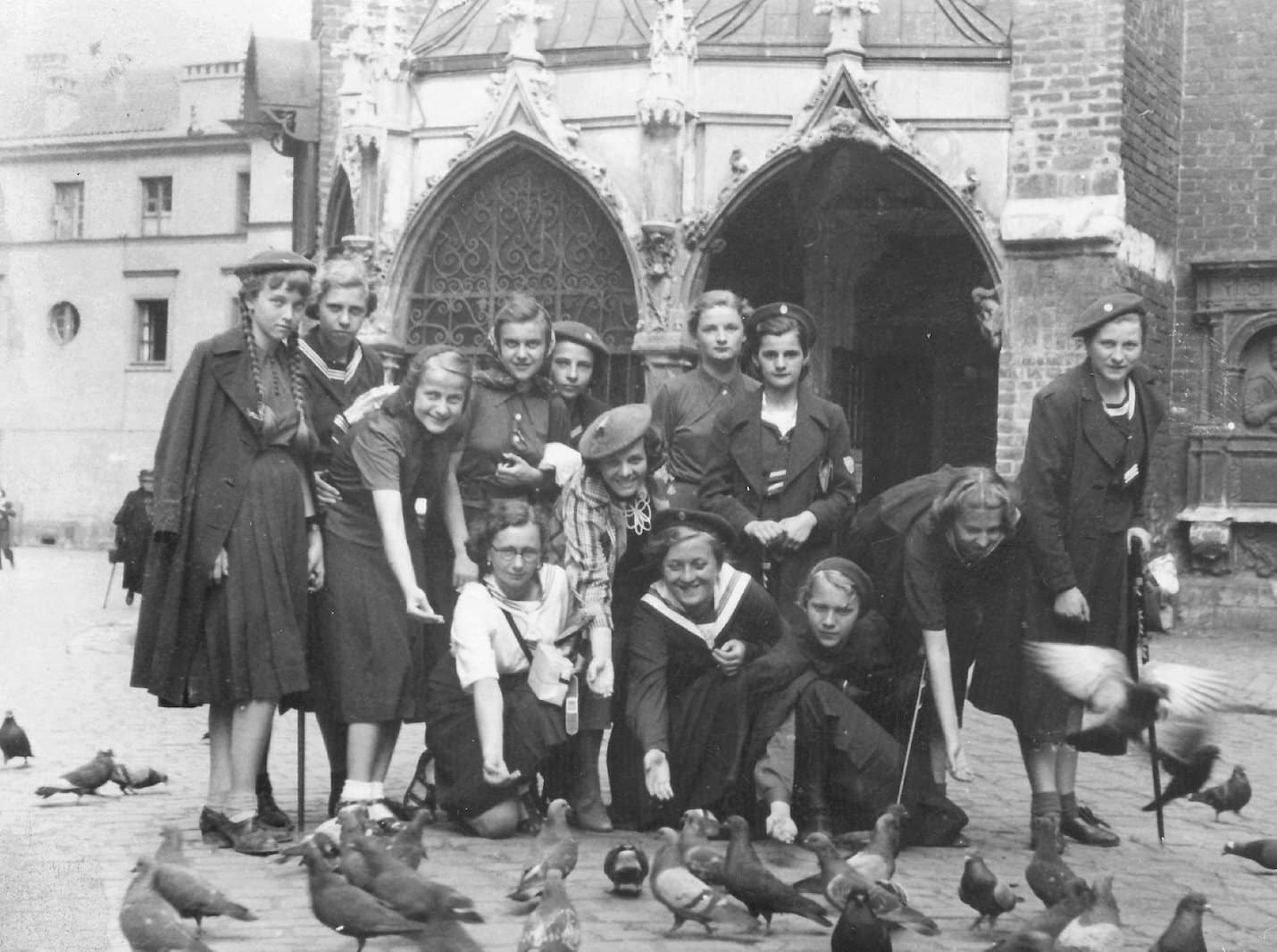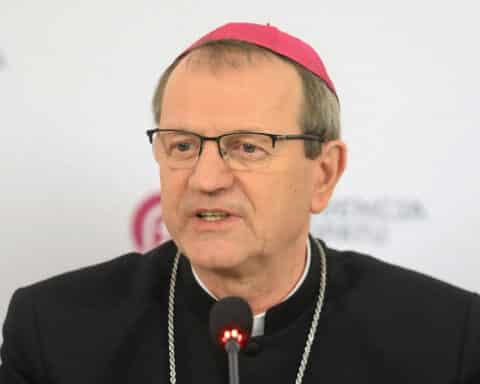KRAKOW, Poland (OSV News) — This Catholic teacher worked to bolster the spiritual and cultural identity of Polish slave laborers, for which she died a martyr’s death in the notorious Ravensbrück concentration camp. Blessed Natalia Tulasiewicz was 39 when she perished in 1945 just as World War II horrors were coming to an end.
Early life and education
Born in Rzeszów, Poland, Tulasiewicz was educated in Kety, Kraków, and Poznan. She loved culture: movies, concerts, and especially theater and poetry. She studied Polish literature at the University of Poznan and graduated with a dissertation on the relationship between music and the work of Adam Mickiewicz, Poland’s national poet.

After her studies, she became a certified teacher in Poznan, where she taught at the Middle School of the Ursuline Sisters, among others. She was a magnet for her pupils, with her beauty, passions for violin, travel and adventure, and smile.
She was a devout Catholic who belonged to the Sodality of Our Lady, a Marian organization for laypeople founded in the 16th century. Not feeling a calling to the consecrated life, Tulasiewicz sought a vocation to marriage and for several years, she was in a fruitless relationship with Janek.
Spiritual calling to bring others to God
But decades before the Second Vatican Council, which revived the ancient tradition of consecrated virgins and widows and stressed the need for an active role for the laity, Tulasiewicz felt that she was called to a single apostolate that could bring others to God.
In her spiritual journal, she wrote: “My mission is to show the world that the path to sainthood also leads across noisy market squares and streets, not only in monasteries and quiet families. … I want to bring Christ to people I encounter on the streets, in streetcars, government offices, shops, restaurants, cinemas, theaters; in a word, everywhere.”
After World War II broke out in 1939, Poznan became incorporated into the Warthegau, a part of Western Poland directly annexed by the Third Reich. To make room for German colonists, Poles and Jews were expelled from their homes. Such was the fate of the Tulasiewicz family, which was deported to Ostrowiec Swietokrzyski, eventually moving to Kraków.
There, Tulasiewicz taught young people at a clandestine school run by the Ursuline Sisters, something illegal in occupied Poland, as the Poles, “subhuman” Slavs in the Nazi ideology, were to be slave laborers for the Aryan “master race.” In Kraków, Tulasiewicz became involved with the Polish resistance.
Mission as a laborer in Germany
During World War II, at least 1.5 million Poles were deported to Germany as slave laborers. Desperate for laborers, the Arbeitsamts, or German labor offices, recruited many workers from occupied Poland, falsely promising them idyllic working conditions. In 1943, Tulasiewicz signed up to work at the Günter Wagner Pelikan ink factory in Hanover.
Her motivation, however, was not economic. She was an envoy of the Home Army, the biggest resistance movement in occupied Poland. Having heard that Polish forced laborers had become estranged from their faith and national identity, as well as increasingly demoralized (prostitution, theft, fights, and alcoholism were spreading among them) — she didn’t think twice on where she belonged with her vocation.
Before going off to Germany, Tulasiewicz participated in a retreat at the community for blind children in Laski founded by Blessed Elzbieta Róza Czacka. In Hanover, she secretly taught the women practical skills such as hygiene and the German language and the classics of Polish literature. She also cared for the women’s religious life, catechizing them, praying the rosary with them, encouraging them to send care packages for the sick, and preparing them for the annual Nativity play at the forced labor camp.
She even tried to teach German inmates, whom as she noted in her diary were mostly irreligious, the Lord’s Prayer. “I try to inculcate understanding of that noblest Union in the world that is the Catholic Church. In this way, I bring God to all the nations I encounter,” she wrote.
Incarceration and sacrifice
Eventually, the Gestapo (Nazi Germany’s infamous political police force) caught wind of Tulasiewicz’s activities, and she was imprisoned and tortured for months, first in Hanover, then in Cologne. Eventually, she was sent to the Ravensbrück concentration camp for women, where Poles made up a third of the inmates, with a death sentence.
Although ailing with tuberculosis, she continued to tend after the spiritual and cultural identities of female inmates. On Good Friday in 1945, Tulasiewicz was sent to Ravensbrück’s gas chambers. She died in the last batch of prisoners that walked into the Nazi death factory of Ravensbrück. It was April 30, the day the camp was liberated and hours before the Soviet Red Army walked into its premises.
After the liberation, women who survived the Nazi horrors were walked away from the camp in the so-called “Death Marches” and many, despite their condition being close to “walking skeletons,” as survivors recalled, were raped by Soviet soldiers. “They called themselves ‘saviors,'” one Polish survivor testified, and expected “rewards.”
Nazi Germans thought that Catholics and the Catholic Church were “deadly enemies” of the regime. During World War II, between 20% and 30% of Polish priests were killed at the hands of Nazi Germany. Of the clergymen killed at Dachau, 84% were Poles. Many lay Catholics — such as the recently beatified Ulma family, murdered for hiding several Jews in the village of Markowa — also perished.
Beatification and legacy
On June 13, 1999, in Warsaw, St. John Paul II beatified 108 Polish wartime martyrs, including Tulasiewicz; she was one of just two laywomen among them. In 2022, the Vatican approved the Polish bishops’ motion to declare her the patron of Polish teachers.
She did not treat teaching as merely a profession, but as a vocation and a way of bringing Christ and ennobling her pupils, her family said.





